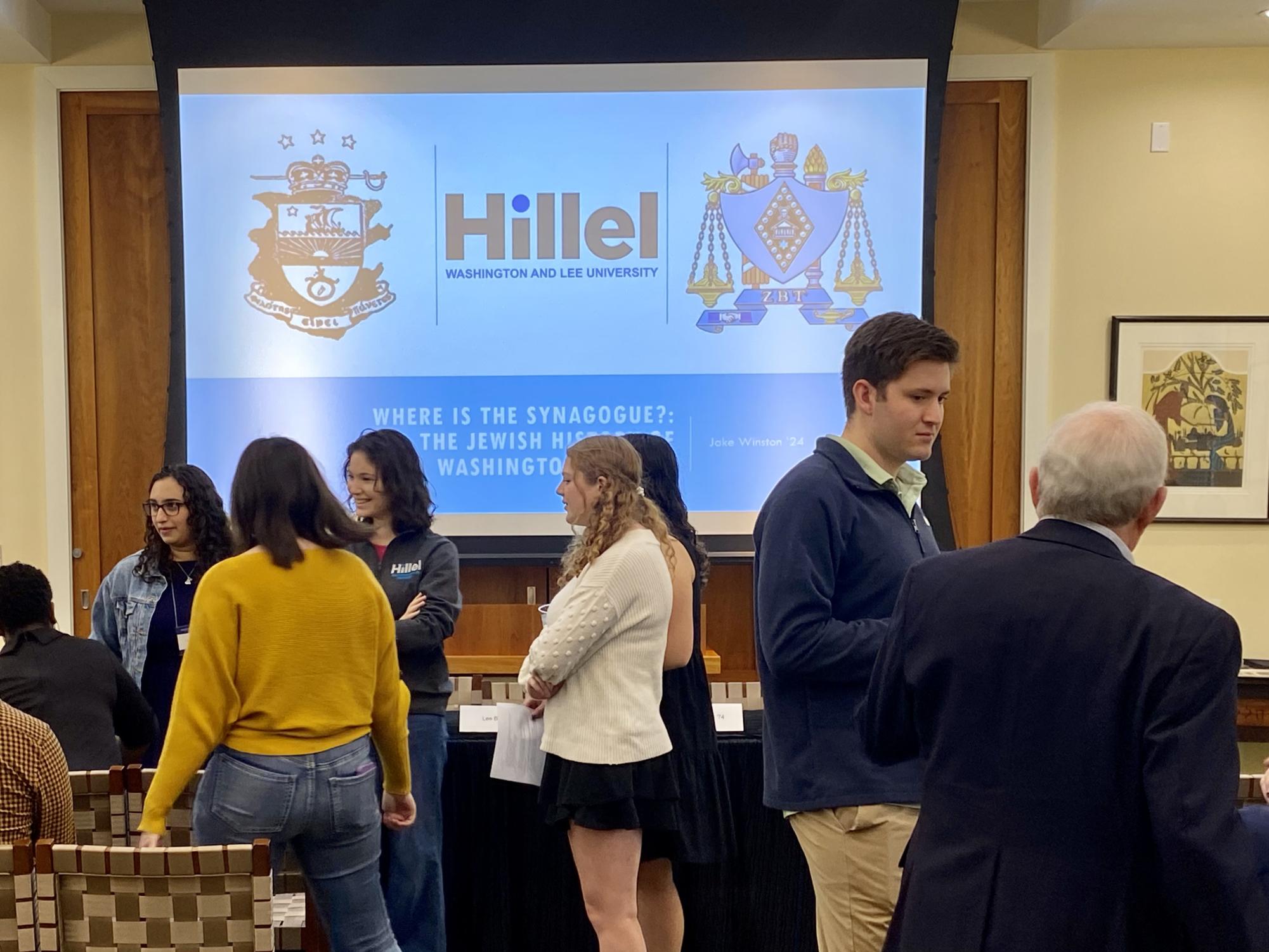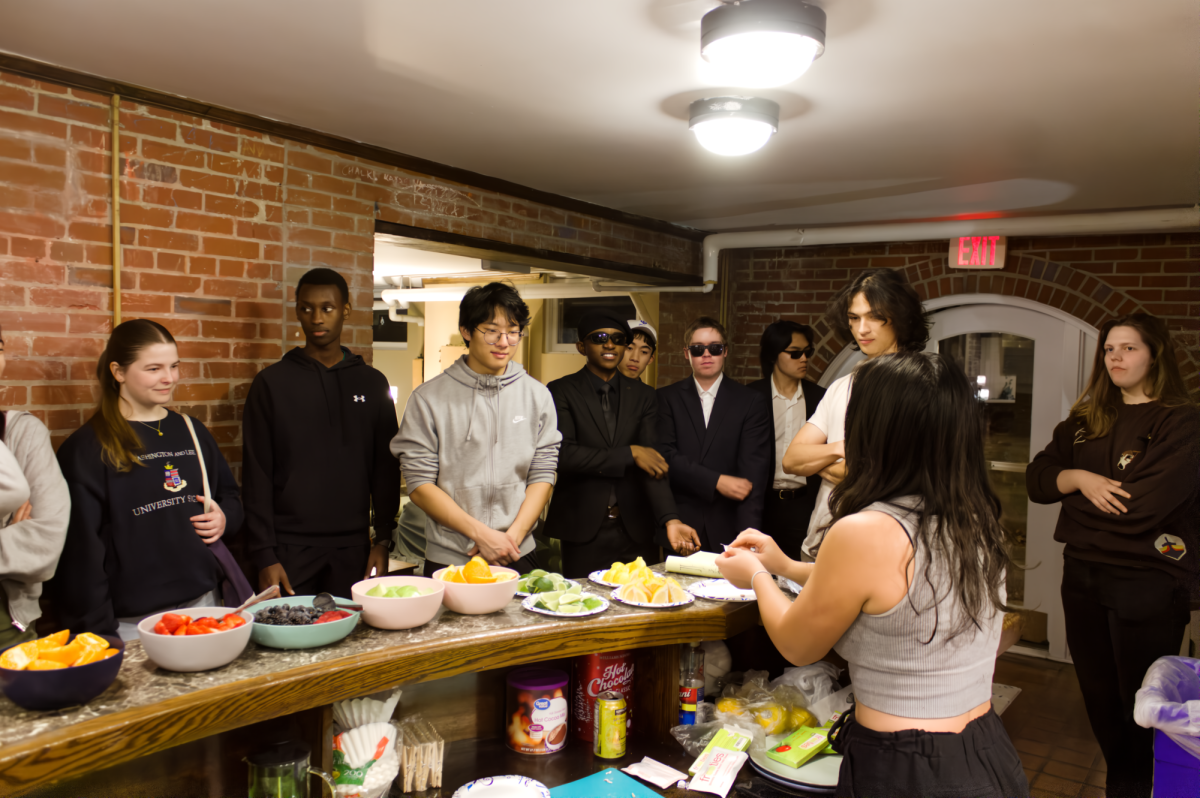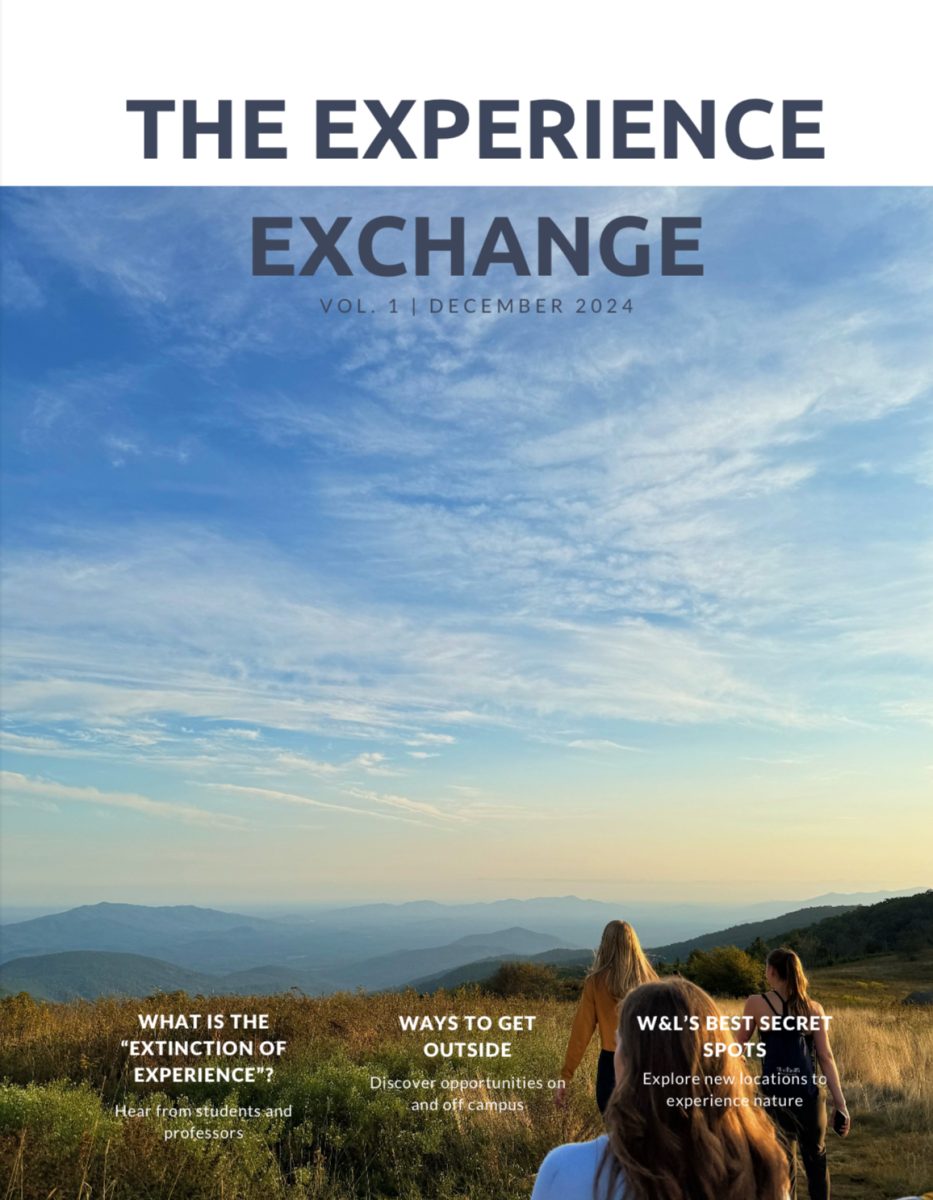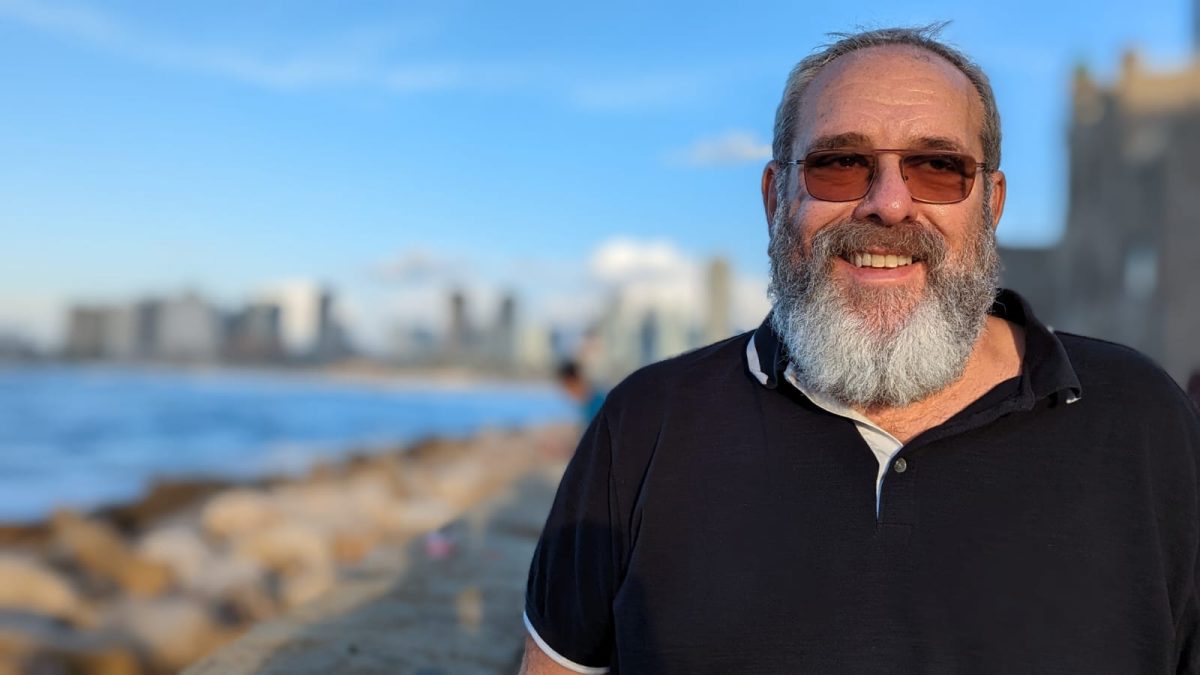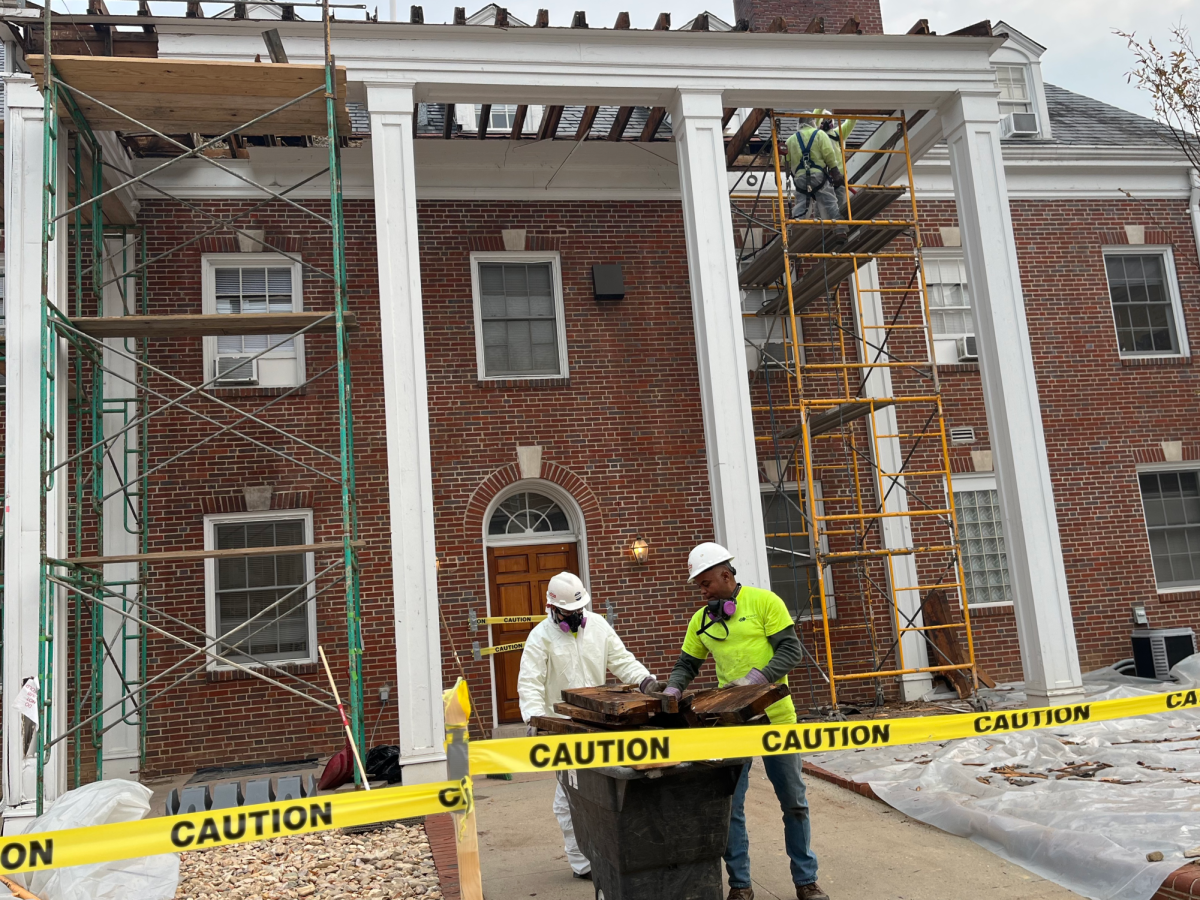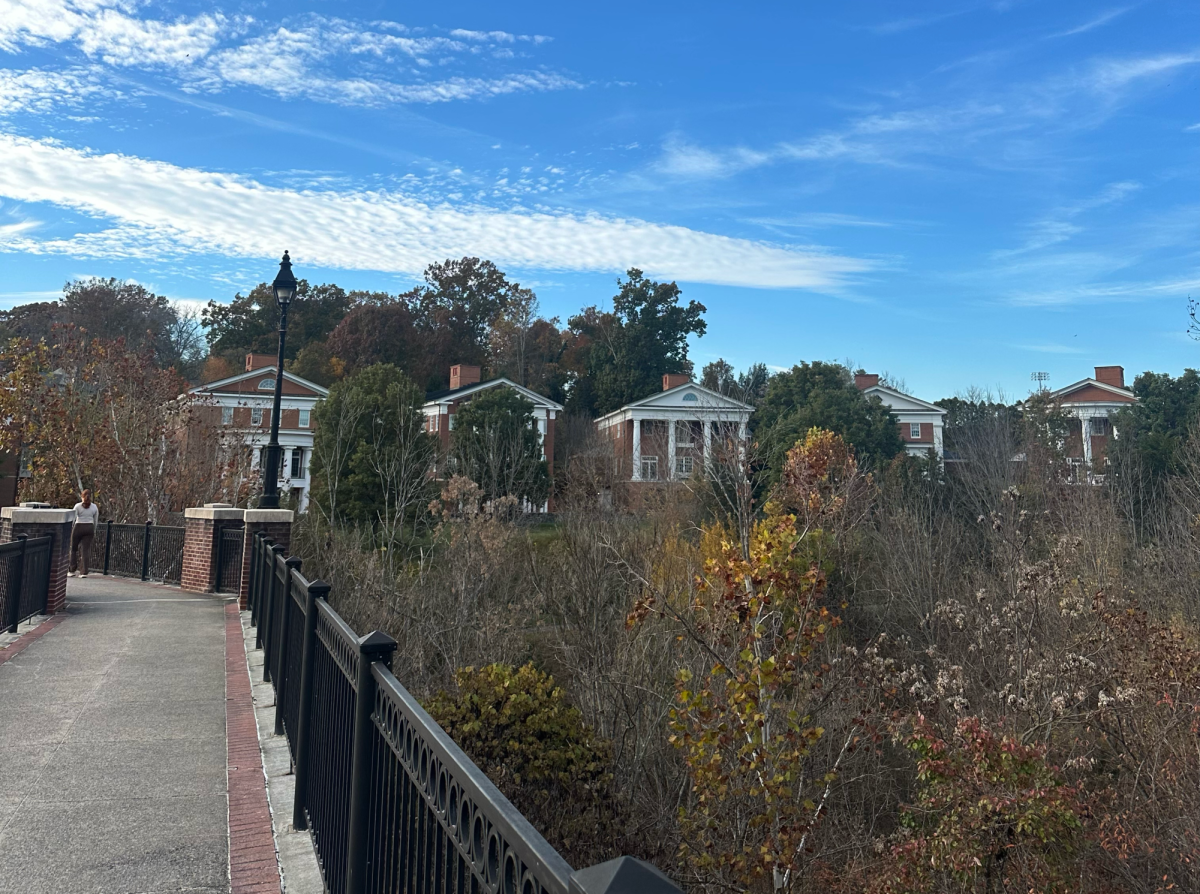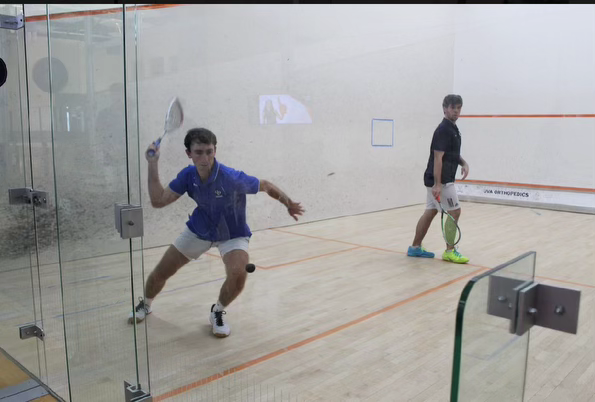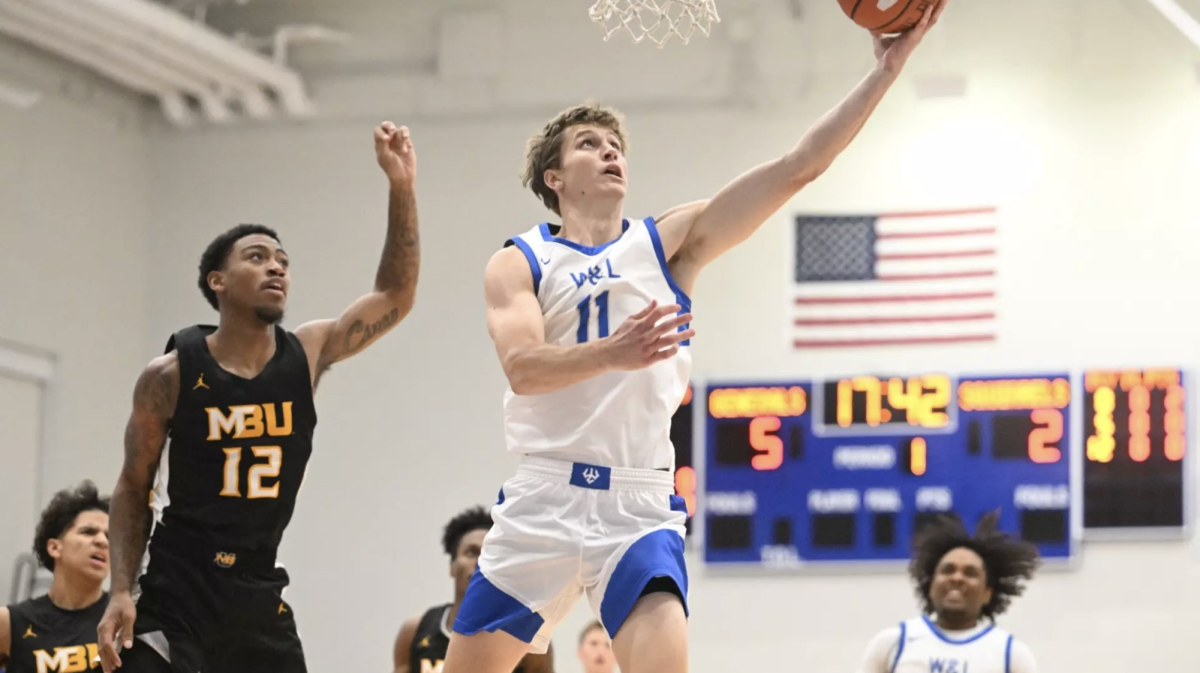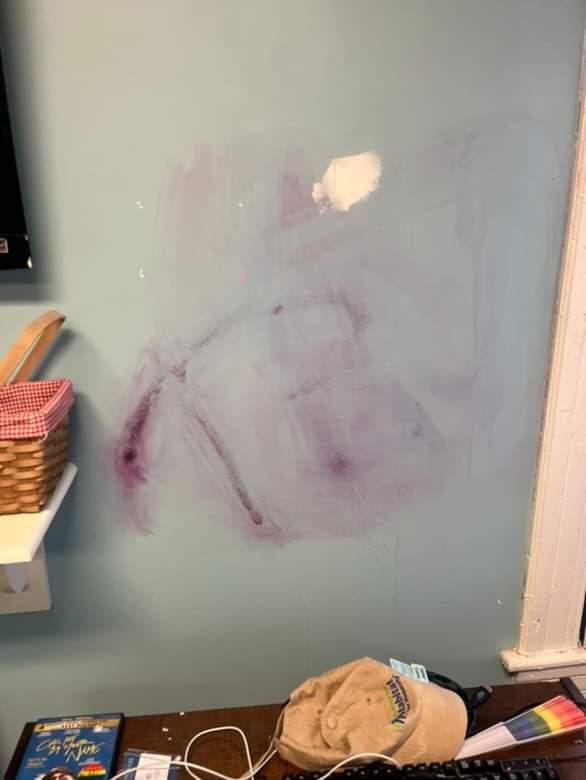Jewish students, alumni, faculty and their friends and families gathered this weekend to celebrate the bayit mitzvah of Hillel House, Washington and Lee’s Center for Jewish Life.
Bayit is Hebrew for “house” or “home,” and mitzvah is used to signal the subject’s transformation into adulthood as they turn 13, allowing them to be an official participant in Jewish religious life.
Hillel House opened in September 2010 and has become a safe space and gathering area for religious services and other resources for Jewish students.
“As both an organization and the physical house, Hillel is a place where you come to college, and you connect with a Jewish community, sometimes for the first time,” said Hillel President Gabby Kogan, ’24. “This is where you choose to be Jewish.”
Kogan said Hillel offers students an accessible space where they can attend religious services for holidays like the High Holy Days and Passover, as well as regular shabbats every Friday and additional educational and social programming.
She said that Hillel also connects Jewish students with scholarships, opportunities to visit Israel and resources for non-Jewish students to convert to Judaism.
Hillel also houses the E. Cafe, a kosher-style cafe popular among students for its bagels and smoothies.
Through the E. Cafe and shabbats that are co-hosted with other multicultural organizations, Kogan says that Hillel has been able to have a “larger footprint on campus,” and that it’s a good thing that Jewish life is open to all students.
“I love seeing that coming to Hillel is so normalized and a regular part of student routine,” said Hillel Board Vice President Sophie Huber, ’25.
Rebecca Hoffman, ’26, one of Hillel’s social impact chairs, said that she really appreciates how central the location of the house is in relation to campus.
“One of my first memories at W&L was seeing how central Hillel was during a campus tour,” she said. “You don’t really see that on any other campus – usually, Jewish houses are kind of hidden away.”
During his presentation on the history of Jewish life at W&L, Hillel Board Vice President Jake Winston, ’24, shared that when Joan Robbins was hired to organize the construction of a center for Jewish life, building the house in a prominent location on campus was integral to her vision.
He explained that during the late 1980s and 90s, Jewish life on campus had become a “desert,” where Jewish enrollment at W&L reached a record low of 1.1% of students. Resources for these students were scarce.
But before this, he said, W&L had enjoyed several decades of vibrant Jewish history since the first Jewish students were recorded in 1919.
“There’s a very robust and vibrant history of Jewish life in Washington and Lee’s story, especially in the last century,” Winston said.
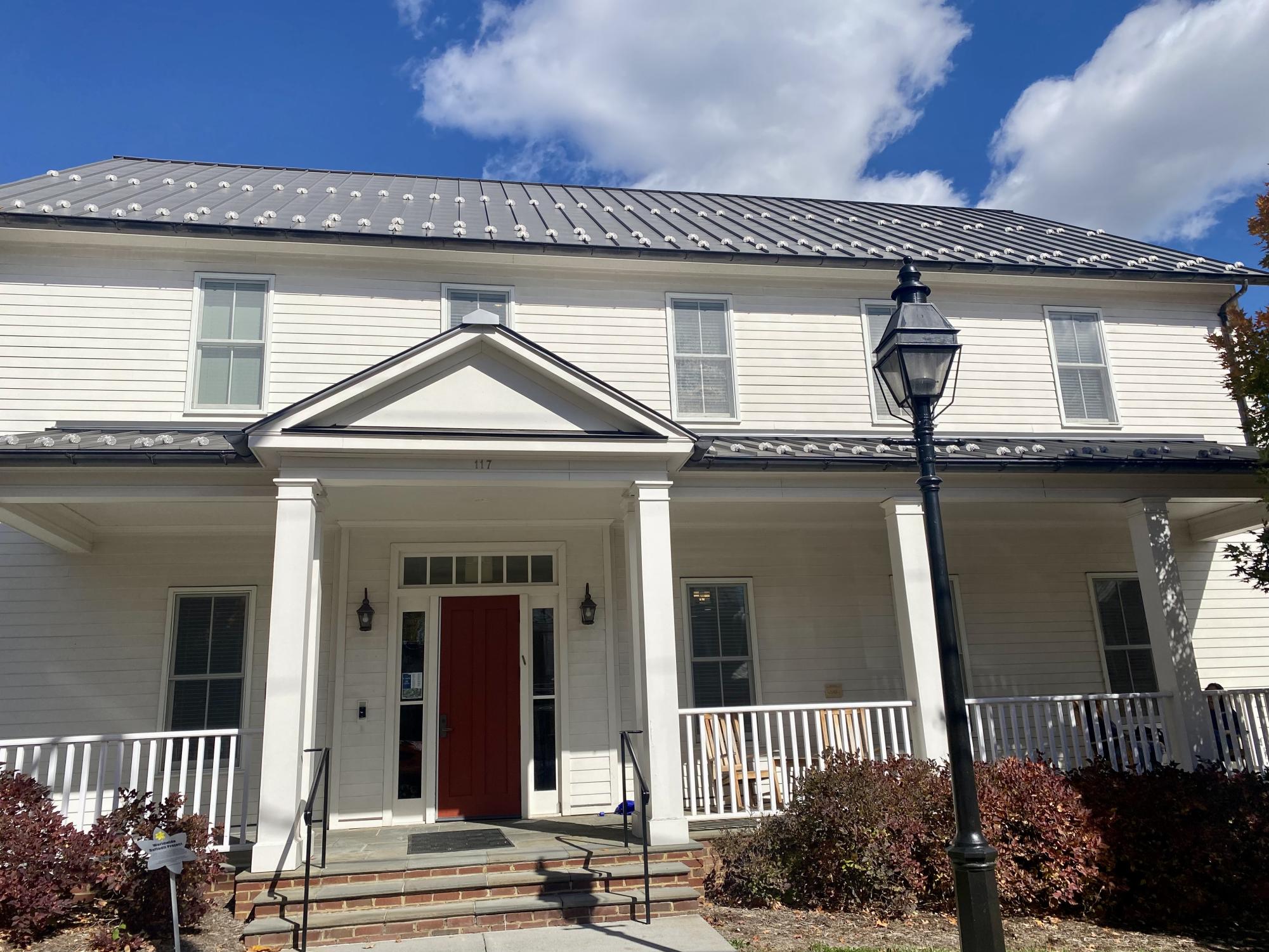
A history of Jewish life at W&L
Winston shared a 1919 Ring-tum Phi article, the first record of Jewish life at W&L, detailing the formation of the Gamma Gamma social club.
He said that the club was formed by six students in order to gain access to on-campus housing. At the time, local landlords refused to rent to Jewish students.
“There has definitely always been this theme of necessity guiding the formation and operation of Jewish organizations at Washington and Lee,” commented Winston.
That same year, members of the Gamma Gamma club founded the Alpha Epsilon chapter of Zeta Beta Tau, a historically Jewish fraternity.
A local Jewish business owner built a house for the brothers of ZBT at 220 Nelson St., where they lived for over 40 years before the house was given to the Kappa Sigma fraternity.
At the end of the 1919-2020 school year, a second Jewish fraternity, Phi Epsilon Pi, was established on campus. This fraternity had a smaller campus impact than ZBT, but remained active until the national organization shut down in 1970.
Winston said that until the late 60’s, W&L’s other fraternities banned Jewish (and all other non-Christian) students from being initiated as members.
If Jewish students were invited to other fraternities’ events, he said, it was so that they could be hazed and otherwise mistreated.
“We were in ZBT because we weren’t welcome anywhere else. There wasn’t any university support for us, either,” said Barry Levin, ’68, who spoke on the “Bridging Generations” alumni panel.
“Unfortunately this restrictive environment wasn’t new to me. You always had a sense of who you are and where you belonged.”
He also said that antisemitic sentiment and remarks were always present, even if not always on the surface.
Despite the lack of systemic and social support at the university, Levin said that the roughly 100 Jewish students he attended W&L with were still able to enjoy Jewish life through their fraternities.
They also were able to drive to Lynchburg and Roanoke for the High Holy Days and other Jewish holidays.
Another alumni speaker, Herb Rubenstein, ’74, said that his membership within ZBT protected him from a lot of the antisemitism that previous generations may have faced. Even then, he and other Jewish students felt pressure to assimilate to the non-Jewish community around them.
One anonymous alum from the 70s shared that when he was a student, a self-proclaimed Nazi from Alabama lived on the floor above him, and had decorated his room with Nazi paraphernalia and portraits of Hitler.
Another said that one of his classmates regularly referred to him with slurs.
Around that time, W&L hired its first Jewish faculty member and first Jewish professor. Lee Kahn was hired in 1965 and built up W&L’s theater program. In 1972, Joseph Goldestein was hired as the first Jewish tenured professor.
In 1966, W&L was officially integrated with the enrollment of two Black students. However, Winston said that these students were not allowed to live in the freshman dorms due to their race. The Black men also had difficulties finding housing in Lexington.
The Jewish fraternities began welcoming Black students and initiating them as brothers, said Winston. Rubenstein added that because of this, a strong bond between Black and Jewish students at W&L was formed.
ZBT was known for embracing counter-culture ideas, such as the aforementioned integration and co-education of men and women.
They also protested against the Vietnam war and had a reputation for recreational drug and marijuana use. This would later lead to the Alpha Epsilon chapter of ZBT being shut down during the 1987-1988 school year.
With no more Jewish fraternities and before the Hillel organization was brought to W&L, Winston said that Jewish life reached a “real low point.”
Doug Panzer, ’98, called Hillel the “water in the desert” that began to revive W&L’s once-vibrant Jewish community.
Before the organization came to campus, Jewish studies professor Richard Marks was trying to connect Jewish students to the school’s limited resources and support without much success.
Since the establishment of Hillel on campus and Hillel House being built, enrollment of Jewish students has increased again with a new wave of programming for the religious and secular aspects of Jewish life.
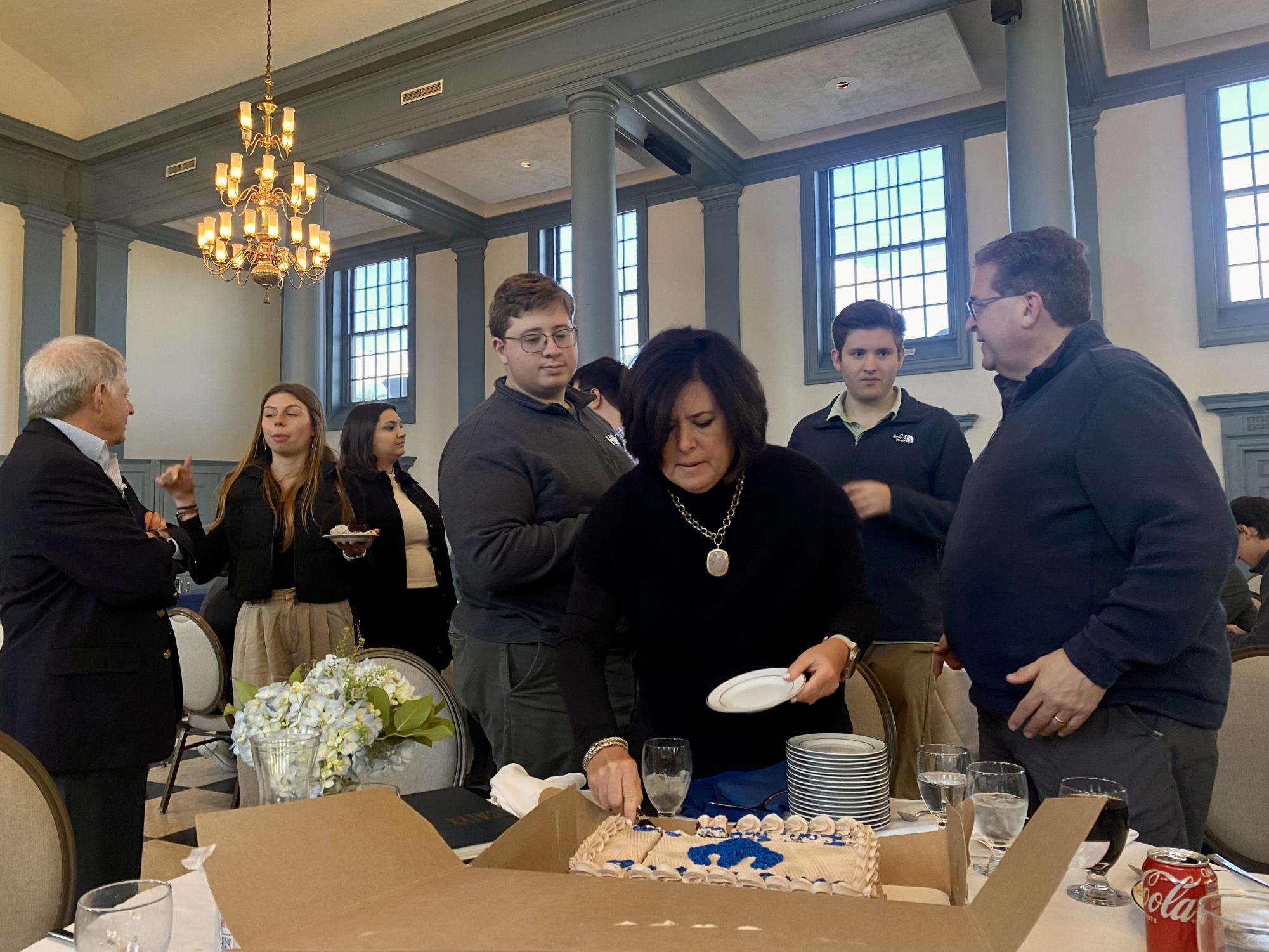
In recent years
Recent graduates Lee Bernstein, ’20, and Ian Bodenheimer, ’22, also spoke about their experiences as Jewish individuals at W&L during the alumni panel.
“I knew from day one that I wanted to go to a school with a vibrant Jewish community,” said Bernstein. “And I was very pleased to find that here. From my very first shabbat here at the house, I found that the Jewish students were incredibly welcoming, and that our community spanned across years so that there were people who could guide me.”
She said that as she continued to be involved with Hillel and eventually served as Hillel Board President for two years, she was excited to see that the community expanded beyond W&L to students at Virginia Military Institute as well as Jewish communities within Lexington and the greater Rockbridge County.
Bernstein also mentioned that one of Hillel’s many merits is its accessibility to other non-Jewish students.
“Many times, friends will tell me that I’m the first Jewish person that they’ve ever met and gotten to know,” she said. “It’s good that there’s space for them to follow along and ask questions.”
Bernstein and Bodenheimer said this environment where students were eager to hear Jewish voices was vital during the few instances that the Jewish community felt endangered during their time at W&L.
“Even though there was nothing targeted at Hillel or specific students, we were made very aware of the dangers we still face today,” she said.
The two young alumni said that they owe it to past generations of students for all of their hard work in ensuring that Jewish students are given institutional support.
“We’re really protected from a lot of direct antisemitism thanks to them,” said Bodenheimer. “The antisemitism that exists on campus is very subtle, and usually just in comments made between friends, to the point where it’s difficult to distinguish playful banter from something sinister.”
Bernstein agreed with the statement, saying that most if not all antisemitism on campus comes with no purposeful ill-intent and instead stems only from ignorance and unfamiliarity of history and culture.

Both agree that the continued investment into education on Jewish life is key to continuing to make Jewish students feel welcomed and safe.
Today’s students are optimistic about the future
“We’re standing on the shoulders of giants,” said current President Gabby Kogan, ’24, mentioning that none of the programs currently in place would be possible without the work and donations of Jewish students over the years.
Students who spoke on the “Jewish Life Today” panel all mentioned that participation in Hillel has given them a tight-knit community and access to many resources that have enhanced their relationship with the Jewish religion and people as well as overall academic experiences.
One program that several students enjoy through Hillel International is Birthright Israel, which allows young adults to travel and experience Israel and Jerusalem for free.
On campus, students and faculty also engage in various social and learning opportunities, such as the annual Latke-Hamentashen debate, challah-baking sessions and bonfires.
Hillel also hosts the Jewish Learning Fellowship (JLF), a 10-week seminar that allows any student to explore Judaism and Jewish traditions.
Gabe Miller, ’25, Hillel’s engagement chair, said that he also really enjoyed the organization’s First Year Students at Hillel (FYSH) programming.
“The FYSH program is sort of like big/little where Jewish first years are introduced to Jewish upperclassmen,” he said. “The program is a fun way to build relationships and make first year students feel comfortable right as they start school.”
The university also offers the Weinstein scholarship, a four-year full-tuition scholarship, to one entering Jewish first year student from each class.
“My favorite event with Hillel was the multicultural ‘Pass the Plate’ potluck we did as a Weinstein event,” said Huber, who is a scholar. “It was a really successful event, and many people told us that they would love to see this potluck happen annually.”
Students also discussed the university and community support of Jewish students in the past few weeks following the Hamas terrorist attacks in Israel.
Hillel hosted a vigil for the lives lost on Oct. 10, which was followed by flag planting in Stemmons Plaza on Oct. 11.
“Many students have family and friends in Israel that they have not been able to contact,” said Kogan. Seeing W&L rally around its Jewish students has been a small consolation to her.
In the following days, Rebecca Hoffman, ’26, shared that Hillel House went into a “lock down,” saying that the house will occasionally limit entrance to students only via swipe access.
“Knowing that there was a place for us that was guaranteed to be safe was really valuable that week,” she said.
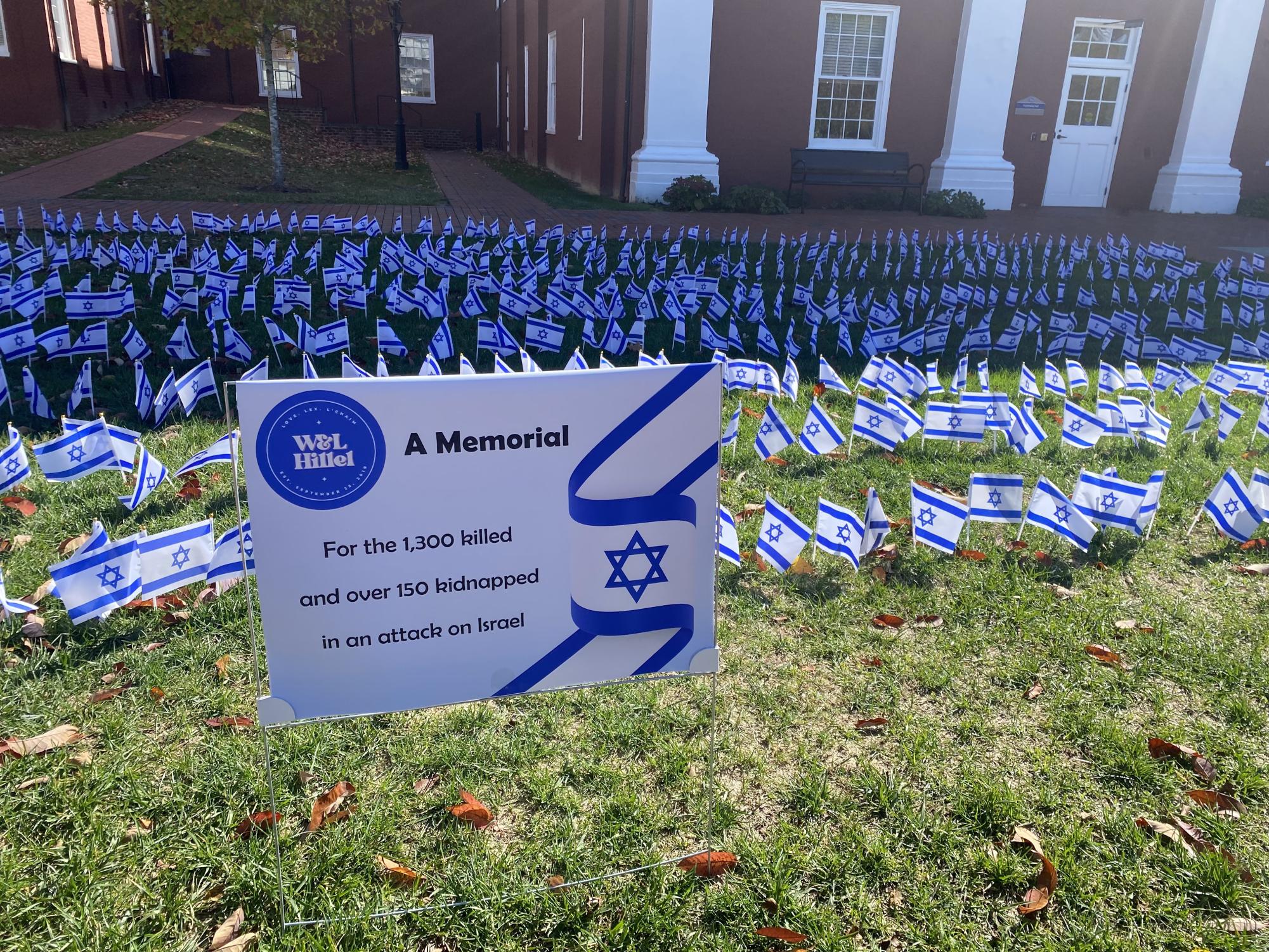
But Jewish life on campus is not without its hardships, and students say that there are still many ways that the university can and should continue to offer support.
For one, the Hillel Board has been completely student-run since the school year began. A new director has not been hired yet.
“I know that it is hard to recruit directors and people to invest in Jewish life at Washington and Lee and in Lexington, but it’s also hard for Jewish students to constantly be hosting their own things,” said Huber. “Every once in a while, we’d like to be able to lean on someone instead of each other.”
Hoffman and Miller said that they would also like an expansion of academic programs and learning opportunities for Jewish students.
Miller said that the university needs to do a better job of making students “more aware of resources available to them” as well as creating more ways to “deepen their learning of Israel and Jerusalem.”
And Hoffman said she would love to see courses teaching Hebrew offered within the next few years.
“It can be hard when the burden of education, and of having complete responsibility for a religion and people fall fully on students,” she said. “If the university was able to integrate Hebrew and learning of Jewish culture into the curriculum, some of that burden would be lifted.”
Hoffman also said that she would like to see more consideration of Jewish holidays when the university is scheduling events.
The university does not give students time off to celebrate the High Holy Days.
“There’s definitely guilt and a feeling of being punished for missing class to be involved with the community,” she said.
Josh Fingerhut, ’24, also stated that limited dining options and being far from big cities makes it difficult for students to keep kosher, or eat according to Jewish guidelines.
“This is a small complaint because the Jewish people certainly didn’t have DHall when they were in the desert for 40 years,” he said. “But I’d appreciate more kosher options, especially for first years who aren’t able to swipe at Hillel and don’t have access to their own kitchens.”
With Washington and Lee hoping to increase the diversity of its student body, which includes attracting Jewish students, Winston said that the school needs to be aware of factors which may discourage underrepresented students from enrolling, such as the school’s name and low number of Jewish faculty members.
“Hillel House is a lot, but it’s no synagogue,” he said.
Colleges are no longer allowed to require students to disclose their religious and ethnic backgrounds, so there is an indeterminate number of Jewish students and faculty at W&L.
There is also no concrete statistic measuring the number of Jewish students against the rates of engagement with Jewish life.
Despite this, Jewish students and alumni call on the university to remember its commitment to diversity and inclusion.
Bennet Ross, ’83, a donor who is heavily involved in Hillel operations, said that a past diversity statement put out by the school used to include language specifically aimed at increasing Jewish presence on campus.
The new diversity statement, he said, no longer includes that.
“You guys have done a lot of great work, and I’m really proud of that,” he told the students of Hillel. “Now it’s up to the university to make good on their commitments.”

